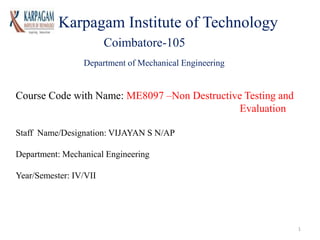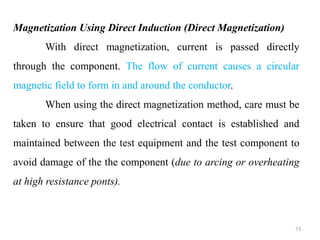This document provides a syllabus for a course on Non-Destructive Testing and Evaluation. It outlines 5 units that will be covered: Overview of NDT, Surface NDE Methods, Thermography and Eddy Current Testing, Ultrasonic Testing and Acoustic Emission, and Radiography. Unit 2 focuses on Liquid Penetrant Testing and Magnetic Particle Testing, covering their principles, materials, procedures, advantages, and limitations. The course aims to teach students various NDE methods, theories, and their industrial applications.






























































































